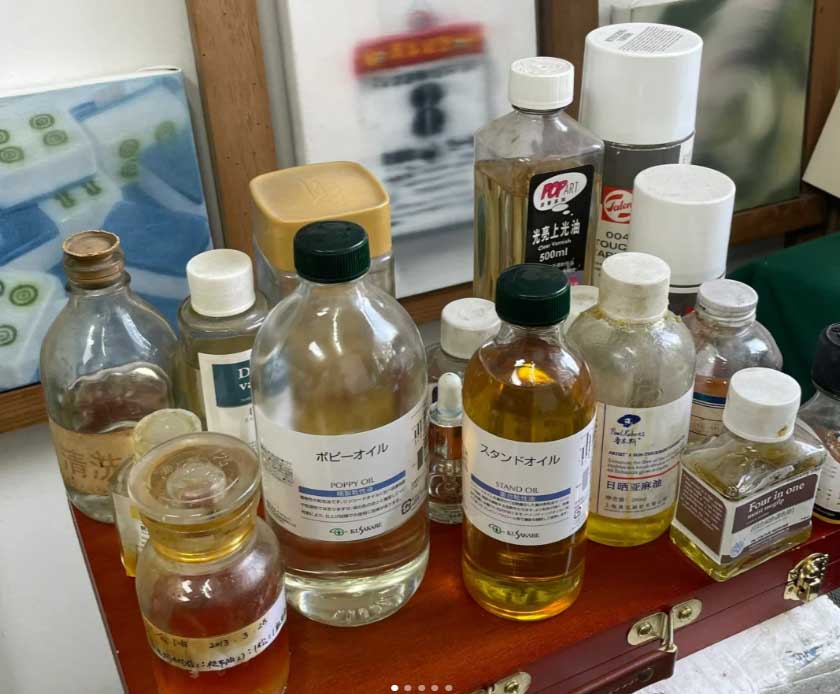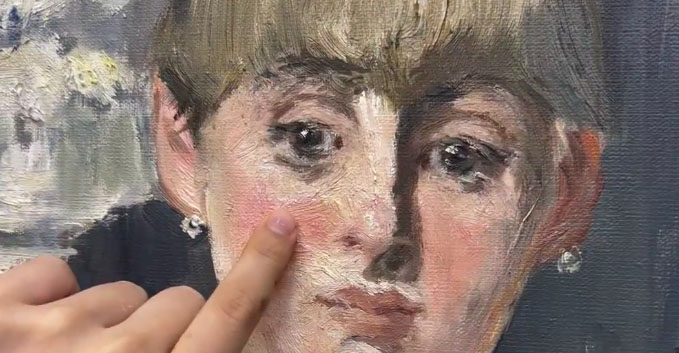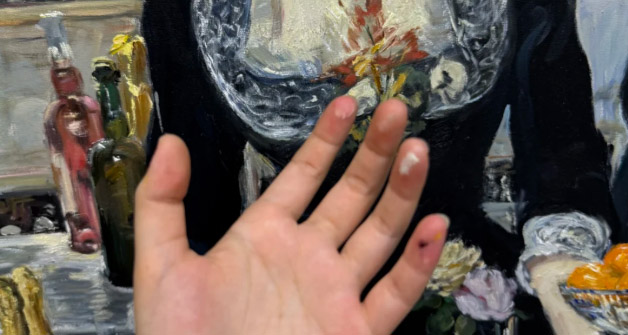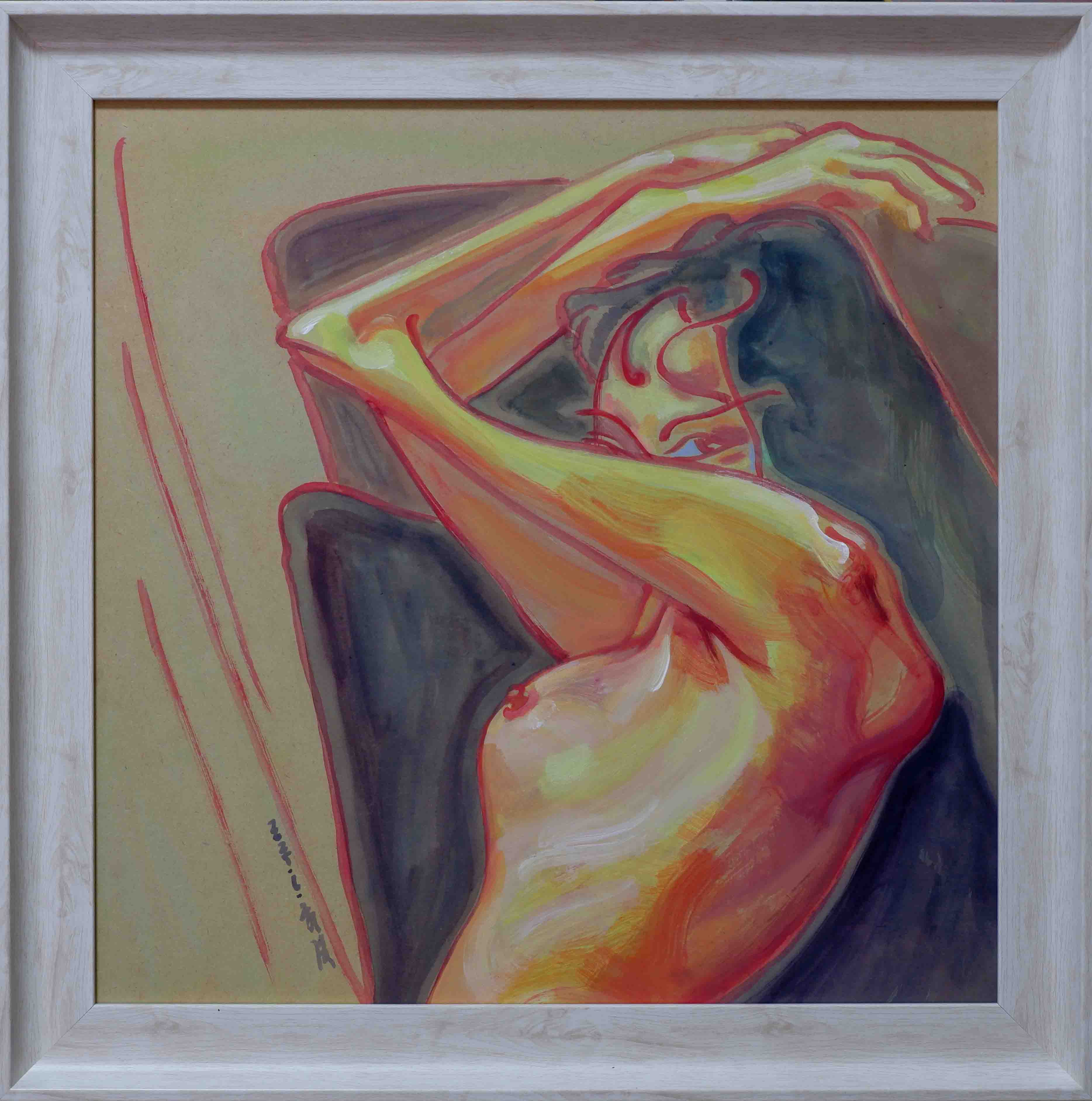Oil painting is revered for its richness, depth, and unparalleled blendability. However, a fundamental characteristic that both defines and challenges its use is the extended drying time. Unlike water-based mediums, oil paint dries through a complex chemical process, not simple evaporation. Understanding precisely how long oil paint takes to dry, and the factors influencing it, is crucial for artists to plan their work, apply layers effectively, and ensure the longevity of their finished pieces. This guide breaks down the process step by step.
The Science of Drying: Oxidation, Not Evaporation
At its core, oil paint drying is a chemical reaction called oxidation. The binder in oil paint – typically linseed oil, poppy seed oil, walnut oil, or safflower oil – reacts with oxygen in the air. This reaction causes the oil molecules to cross-link and form a solid film, trapping the pigment particles within it. This is fundamentally different from acrylics or watercolours, where water evaporates, leaving the binder and pigment behind. Oxidation is a slow, ongoing process that begins at the surface and gradually penetrates downwards through the paint layer. Drying is not evaporation; it is the chemical hardening of the oil binder through oxidation.

Key Factors Influencing Drying Speed
Numerous variables significantly impact how quickly or slowly an oil painting dries. The type of oil binder is paramount; linseed oil dries the fastest, followed by walnut oil, while poppy and safflower oils dry considerably slower. Pigment composition also plays a critical role; earth colours like umbers and sienas often contain metallic driers that accelerate the process, whereas many modern synthetic organic pigments (like phthalos or quinacridones) and heavy metal pigments (like cadmiums or cobalts) can slow drying considerably. The thickness of application is another major factor; impasto techniques using thick paint will dry much slower than thin glazes or scumbles. Environmental conditions are equally crucial: warm, well-ventilated environments dramatically speed up oxidation, while cold, humid, or stagnant air significantly retards it. Artists also frequently use alkyd-based mediums or traditional driers like cobalt siccative to accelerate drying predictably, though these should be used sparingly and according to manufacturer guidelines. The drying time of oil paint is highly variable, primarily dependent on the binder type, pigment chemistry, paint film thickness, environmental conditions, and the use of drying mediums.

Typical Drying Timeframes: Surface Dry vs. Touch Dry vs. Thoroughly Dry
Given the influencing factors, providing a single drying time is impossible. However, general timeframes can be established under average studio conditions (room temperature, moderate humidity). For thin layers applied with linseed oil-based paint: the surface may become touch-dry (no longer tacky to a gentle touch) in as little as 18-24 hours. Thicker applications of the same paint might take 3-5 days or longer to achieve a similar state. Paint films using slower-drying binders like safflower oil can remain tacky for a week or more, even in thin layers. Crucially, "touch dry" does not mean the paint is cured underneath. A film that feels dry on top may still be soft and vulnerable underneath. Paint is generally considered sufficiently dry for overpainting (applying the next layer) when it is touch-dry and firm – typically 2-7 days for thin layers, potentially weeks for thick impasto. For the paint to be considered thoroughly dry throughout (cured) and ready for varnishing, a much longer period is required – often 6 months to a year, sometimes longer for very thick paintings. While thin layers may feel dry within days, oil paint requires weeks for safe overpainting and many months to a year for complete curing and varnishing.

Testing for Dryness: Essential Precautions
Determining when paint is ready for the next step is vital. The most common test is the gentle fingernail test on an inconspicuous area or the edge of the canvas. Press lightly with a fingernail; if it leaves no mark and feels firm (not soft or yielding), it's likely ready for overpainting. Avoid the temptation to touch the surface frequently with fingers, as skin oils can damage the film. For thicker applications, pressing lightly with a knuckle can reveal if the underlying layers are still soft. When in doubt, waiting longer is always the safer approach. Applying new paint over a layer that is only surface-dry risks cracking, sinking in, or creating adhesion problems later. Accurately assessing dryness requires careful physical testing, such as the gentle fingernail test, and patience is paramount to avoid compromising the painting's integrity.

Practical Implications for the Artist
Understanding drying times directly impacts an artist's workflow and technique. The "fat over lean" principle – applying more flexible, oil-rich layers over less flexible, leaner layers – relies on allowing sufficient drying between sessions to maintain structural stability and prevent cracking. Artists working alla prima (wet-on-wet) complete sections or entire paintings in one session before layers dry. Those building up glazes or complex layered works must meticulously plan drying periods between stages. Drying time also dictates how a painting can be handled, transported, or stored. A "dry to the touch" painting might be carefully moved, but a fully cured painting is far more resilient. Framing and varnishing should only occur after the paint is thoroughly cured, typically after 6-12 months, as recommended by major manufacturers and conservators at institutions like the National Gallery in London or the Museum of Modern Art (MoMA) in New York. Varnishing too early traps solvents and moisture, leading to cloudiness or long-term damage. Mastering the management of drying times is essential for employing fundamental oil painting techniques safely, ensuring the structural stability of the artwork, and planning for its final protection and presentation.
About Artphiloso
Hi, I’m Philo, a Chinese artist passionate about blending traditional Asian art with contemporary expressions. Through Artphiloso, my artist website, I share my journey and creations—from figurative painting and figure painting to floral oil painting and painting on landscape. You'll also find ideas for home decorating with paint and more.


FAQ
How long before I can paint over an oil layer?
A layer is typically ready for overpainting when it is touch-dry and firm to a gentle fingernail test, usually taking 2 to 7 days for thin layers under average conditions. Thicker layers require significantly longer, potentially weeks.
How long should I wait to varnish an oil painting?
Varnishing should only be done once the painting is fully cured throughout. This generally takes 6 to 12 months, depending on paint thickness and environmental conditions. Consult the varnish manufacturer’s guidelines, such as those from Winsor & Newton or Gamblin.
Can I make oil paint dry faster?
Yes, several methods can accelerate drying: using a fast-drying binder like linseed oil; incorporating a small amount of alkyd medium (e.g., Liquin) or a traditional siccative (like cobalt drier); painting in thin layers; and ensuring a warm, well-ventilated workspace. Always follow product instructions carefully.
Does the colour of the paint affect drying time?
Absolutely. Pigments have a significant impact. Earth pigments (e.g., raw umber, burnt sienna) often dry fastest. Many synthetic organic pigments (e.g., phthalo blue, quinacridone red) and heavy metal pigments (e.g., cadmium red, cobalt blue) tend to dry more slowly. Check manufacturer information on specific pigments from brands like Michael Harding or Old Holland.
How does humidity affect oil paint drying?
High humidity significantly slows the oxidation process, extending drying times considerably. Low humidity generally speeds up drying. Consistent, moderate humidity is ideal for predictable drying rates.
